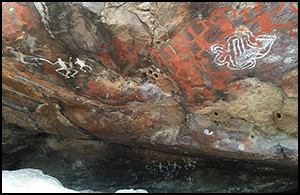Editorial
EDITORIAL
-
- Published online by Cambridge University Press:
- 15 September 2016, pp. 1145-1150
-
- Article
-
- You have access
- HTML
- Export citation
Research
The eastern Asian ‘Middle Palaeolithic’ revisited: a view from Korea
-
- Published online by Cambridge University Press:
- 15 September 2016, pp. 1151-1165
-
- Article
- Export citation
Hunting dogs as environmental adaptations in Jōmon Japan
-
- Published online by Cambridge University Press:
- 15 September 2016, pp. 1166-1180
-
- Article
- Export citation
The Desert Fayum at 80: revisiting a Neolithic farming community in Egypt
-
- Published online by Cambridge University Press:
- 15 September 2016, pp. 1181-1195
-
- Article
- Export citation
Settlement layout and social organisation in the earliest European Neolithic
-
- Published online by Cambridge University Press:
- 15 September 2016, pp. 1196-1212
-
- Article
- Export citation
How long does it take to burn down an ancient Near Eastern city? The study of experimentally heated mud-bricks
-
- Published online by Cambridge University Press:
- 15 September 2016, pp. 1213-1225
-
- Article
- Export citation
Early pottery in the North American Upper Great Lakes: exploring traces of use
-
- Published online by Cambridge University Press:
- 15 September 2016, pp. 1226-1237
-
- Article
- Export citation
The early history of the Greek alphabet: new evidence from Eretria and Methone
-
- Published online by Cambridge University Press:
- 15 September 2016, pp. 1238-1254
-
- Article
- Export citation
Rice, beans and trade crops on the early maritime Silk Route in Southeast Asia
-
- Published online by Cambridge University Press:
- 15 September 2016, pp. 1255-1269
-
- Article
-
- You have access
- Open access
- HTML
- Export citation
The anthropology and history of rock art in the Lower Congo in perspective
-
- Published online by Cambridge University Press:
- 15 September 2016, pp. 1270-1285
-
- Article
- Export citation
Pottery technology, settlement and landscape in Antofagasta de la Sierra (Catamarca, Argentina)
-
- Published online by Cambridge University Press:
- 15 September 2016, pp. 1286-1301
-
- Article
- Export citation
A GIS-based viewshed analysis of Chacoan tower kivas in the US Southwest: were they for seeing or to be seen?
-
- Published online by Cambridge University Press:
- 15 September 2016, pp. 1302-1317
-
- Article
-
- You have access
- Open access
- HTML
- Export citation
The death of Kaakutja: a case of peri-mortem weapon trauma in an Aboriginal man from north-western New South Wales, Australia
-
- Published online by Cambridge University Press:
- 15 September 2016, pp. 1318-1333
-
- Article
- Export citation
Firewood of the Napoleonic Wars: the first application of archaeological charcoal analysis to a military camp in the north of France (1803–1805)
-
- Published online by Cambridge University Press:
- 15 September 2016, pp. 1334-1347
-
- Article
- Export citation
The archaeology of Anthropocene rivers: water management and landscape change in ‘Gold Rush’ Australia
-
- Published online by Cambridge University Press:
- 15 September 2016, pp. 1348-1362
-
- Article
- Export citation
Method
The application of quick response (QR) codes in archaeology: a case study at Telperion Shelter, South Africa
-
- Published online by Cambridge University Press:
- 15 September 2016, pp. 1363-1372
-
- Article
- Export citation
Debate
Doctors, chefs or hominin animals? Non-edible plants and Neanderthals
-
- Published online by Cambridge University Press:
- 15 September 2016, pp. 1373-1379
-
- Article
- Export citation
‘Egypt’: legitimation at the museum
-
- Published online by Cambridge University Press:
- 15 September 2016, pp. 1380-1382
-
- Article
-
- You have access
- HTML
- Export citation
Neo-Prehistory—Exist. Regenerate. Repeat?
-
- Published online by Cambridge University Press:
- 15 September 2016, pp. 1383-1386
-
- Article
- Export citation
Review
Gods and scholars: archaeologies of religion in the Near East
-
- Published online by Cambridge University Press:
- 15 September 2016, pp. 1387-1389
-
- Article
- Export citation
















